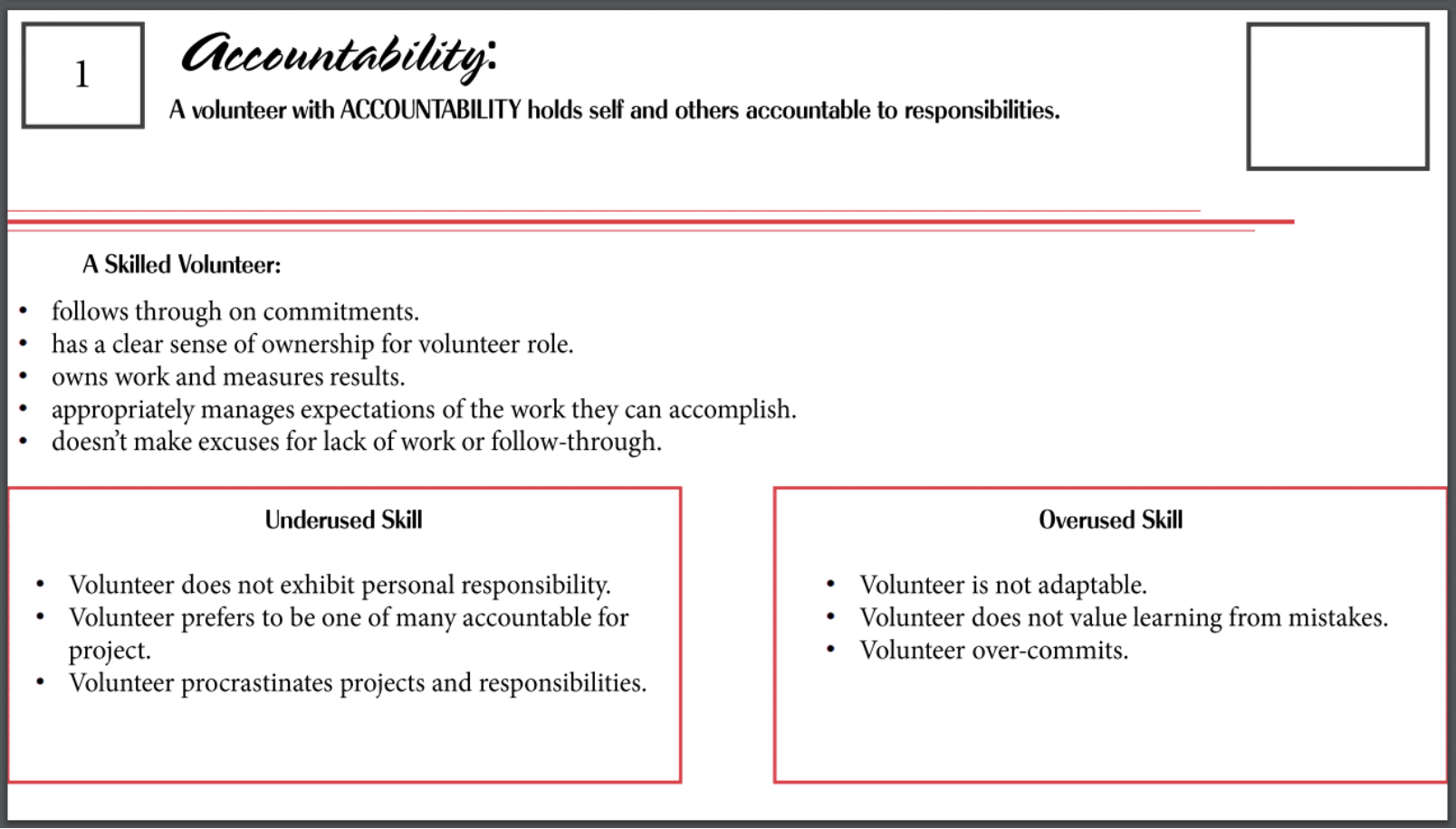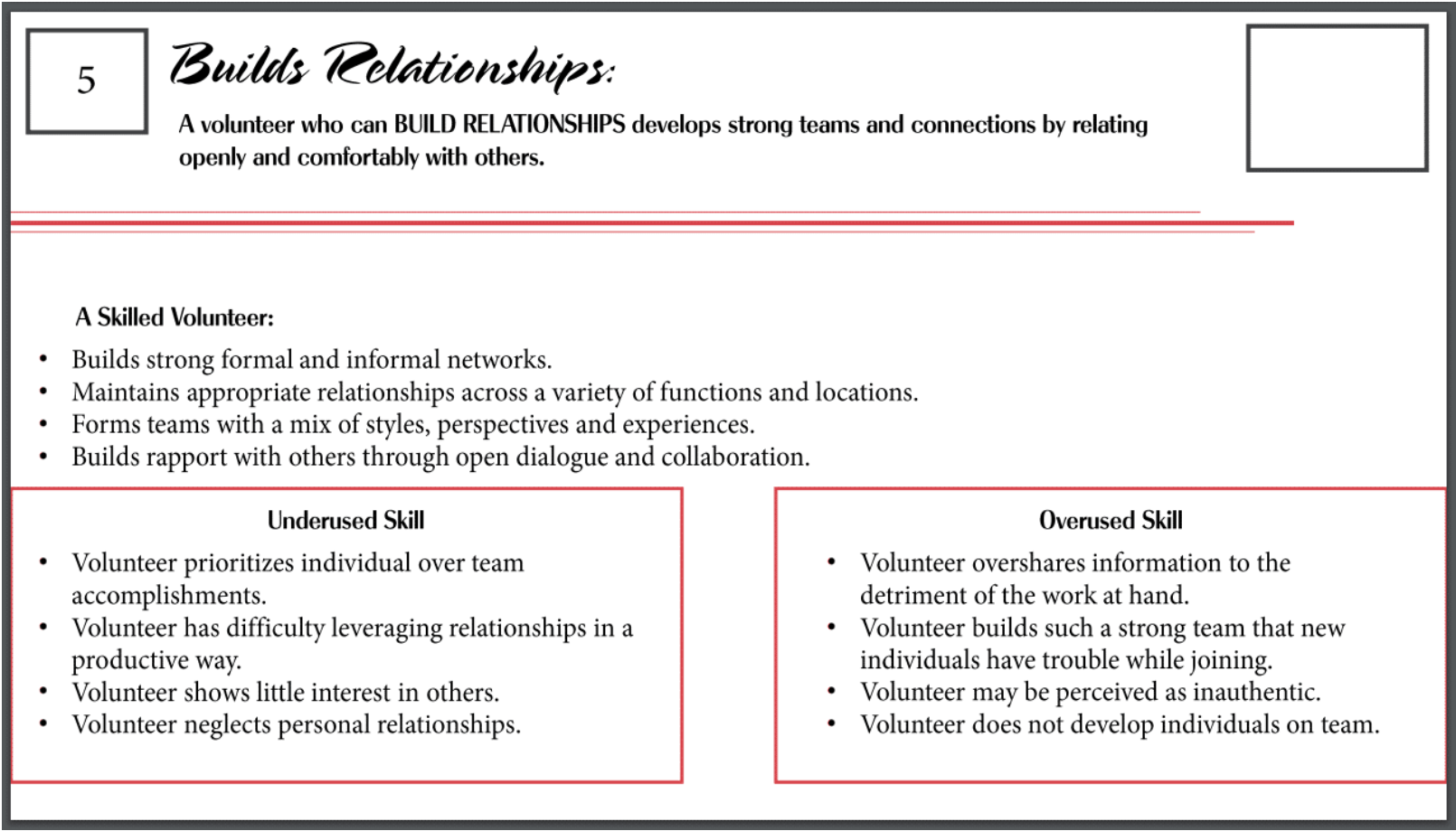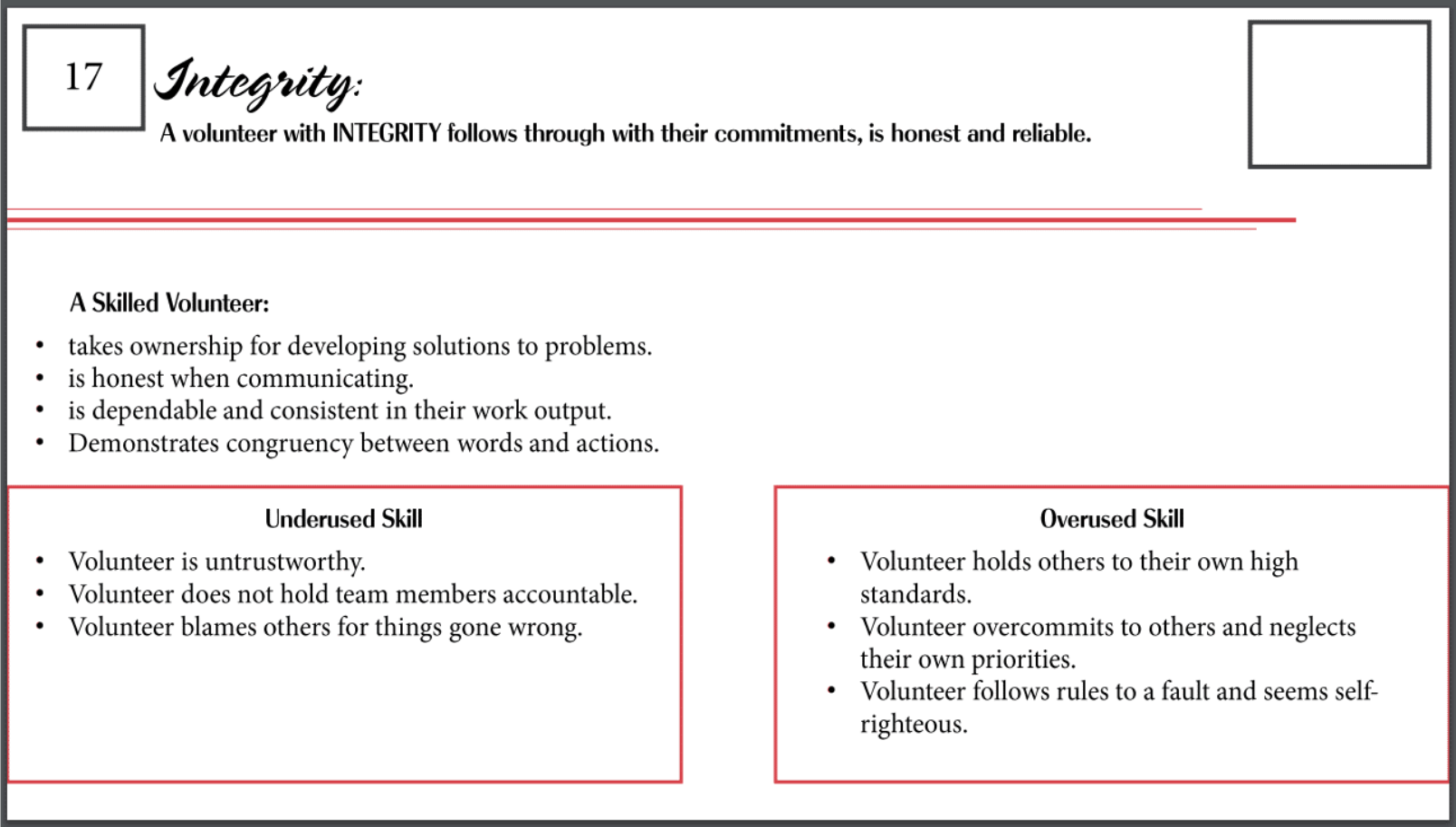Competency Development
-
The organization is a member based, non-profit focused on women's leadership development. The organization relies heavily on a large volunteer workforce. In line with larger trends within volunteer management, the organization noticed that there was difficulty recruiting and retaining volunteers. Established by the board of directors, a strategic priority of the organization was to develop a volunteer management, training and advancement program.
-
The organization had been using a variety of competency libraries for staff development. Additionally, a core value is to promote lifetime learning and personal development within their members and volunteers. To continue the focus on developing and retaining volunteers, I decided that the training program would also establish volunteer competencies for all operational volunteer roles within the Enterprise. Establishing and training volunteers based on comptentences will allow the organization to better recruit and retain members to fill vital roles within the organization. For the purpose of this project, competencies are defined as "observable skills or behaviors".
-
The organization determined that they wanted their own customized competency library developed. I started by researching existing competency libraries. This research included studying Korn Ferry, The Leadership and Training Institute, the Association of Fraternity/Sorority Advisors, and the Society for Human Resource Management.
I developed and wrote 28 competencies for the library and performed a competency sort with staff members who oversaw volunteer teams as well as key volunteer stakeholders. Through two rounds of competencie sorts, 7 core competencies were identified.
Each card followed visual and branding guidelines.
Each card was numbered so that participants could easily sort and organize their cards.
Each competency included a definition as well as characteristics of a skilled volunteer. Examples of overusing or underusing the skill were also included.
The empty box in the top right hand corner is for sort participants to mark whether the competencies were high, medium or low importance.
Design Considerations
The competency trainings would be delivered via e-learning modules and housed on the organization's learning management system, call The Heights. Since these were going to be a large suite of trainings for volunteers, the primary pattern "dash" was selected for all trainings to make them feel cohesive. Three colors from the organization's brand were selected to use as alternating primary colors within the suite of modules. This allowed for visual diversity between modules, but still created a sense of visual cohesion when viewing the suite.
Each module follows the same format: introduce the competency; learn what it means to underuse the skill, followed by a knowledge check; learn what it means to overuse the skill, followed by a knowledge check; dive deeper into the competency definition, focusing on what the skill looks like in practice. Throughout the modules, there are points where the learner has to stop and reflect on their understanding of the competency or how they are going to practice the competency in their volunteer work. Each module wraps up with a quiz. The quizzes are designed so that the learner must answer each question correctly before completing the module. If a learning answers a question incorrectly, they are prompted to review the information through a lightbox slide and then retake the question.
Final Product
As the content written for the organization is proprietary, the only example I can share from this suite is the introduction module. When a volunteer logs into their account on The Heights, they are required to take the introduction module before moving on to take any of the core competency modules. They can take the core competency modules in any order. Start to finish, Volunteer Competency Trainings took two years to complete while dedicating about 1/3 of every work week on this project.



